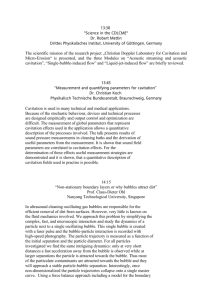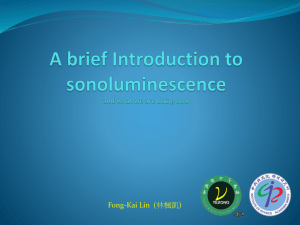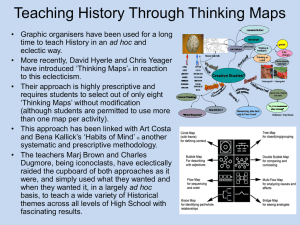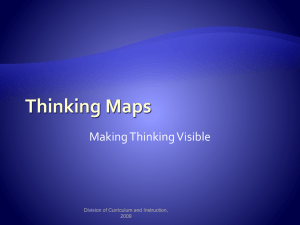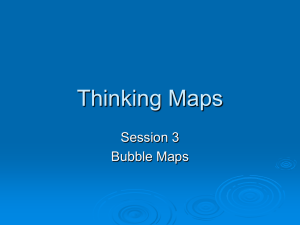Programm und Abstracts - Third Institute of Physics
advertisement
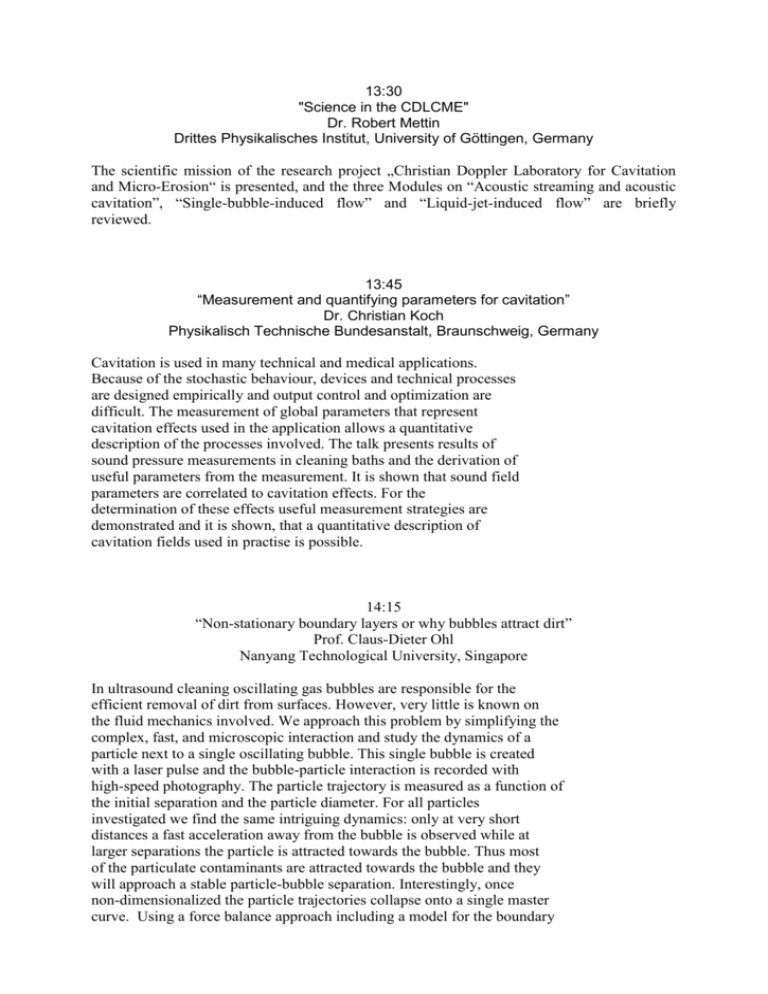
13:30 "Science in the CDLCME" Dr. Robert Mettin Drittes Physikalisches Institut, University of Göttingen, Germany The scientific mission of the research project „Christian Doppler Laboratory for Cavitation and Micro-Erosion“ is presented, and the three Modules on “Acoustic streaming and acoustic cavitation”, “Single-bubble-induced flow” and “Liquid-jet-induced flow” are briefly reviewed. 13:45 “Measurement and quantifying parameters for cavitation” Dr. Christian Koch Physikalisch Technische Bundesanstalt, Braunschweig, Germany Cavitation is used in many technical and medical applications. Because of the stochastic behaviour, devices and technical processes are designed empirically and output control and optimization are difficult. The measurement of global parameters that represent cavitation effects used in the application allows a quantitative description of the processes involved. The talk presents results of sound pressure measurements in cleaning baths and the derivation of useful parameters from the measurement. It is shown that sound field parameters are correlated to cavitation effects. For the determination of these effects useful measurement strategies are demonstrated and it is shown, that a quantitative description of cavitation fields used in practise is possible. 14:15 “Non-stationary boundary layers or why bubbles attract dirt” Prof. Claus-Dieter Ohl Nanyang Technological University, Singapore In ultrasound cleaning oscillating gas bubbles are responsible for the efficient removal of dirt from surfaces. However, very little is known on the fluid mechanics involved. We approach this problem by simplifying the complex, fast, and microscopic interaction and study the dynamics of a particle next to a single oscillating bubble. This single bubble is created with a laser pulse and the bubble-particle interaction is recorded with high-speed photography. The particle trajectory is measured as a function of the initial separation and the particle diameter. For all particles investigated we find the same intriguing dynamics: only at very short distances a fast acceleration away from the bubble is observed while at larger separations the particle is attracted towards the bubble. Thus most of the particulate contaminants are attracted towards the bubble and they will approach a stable particle-bubble separation. Interestingly, once non-dimensionalized the particle trajectories collapse onto a single master curve. Using a force balance approach including a model for the boundary layers we find good agreement with the experiments. The developing unsteady boundary layers are causing the attraction of the particles. Additionally, we observed rolling dynamics induced by the strong shear flow and find angular speeds of more than 100,000 revolutions per second! In summary both -torque and linear drag- are contributing to the acceleration of adherent dirt particles and are thus important for cleaning with bubbles. 15:00 “Laser-induced micro- and nano-bubbles: Basic physics and biomedical applications” Prof. Alfred Vogel Institut für Biomedizinische Optik, Universität zu Lübeck, Germany Optical breakdown and spherical cavitation bubble collapse are different nonlinear mechanisms producing a large energy density within a small spatial region. Extreme states of matter with pressures up to 107 MPa have been claimed for femtosecond optical breakdown [1], and temperatures up to 108 K for the collapse of bubbles in a sound field were postulated shortly after the discovery of sonolominescence [1,2]. Direct experimental verification of such claims is impossible because of the small spatial and temporal scale on which the extremes occur. Instead, p and T have to be inferred from other experimental information and equation of state (EOS) data. We managed to produce highly spherical cavitation bubbles in water by focusing laser pulses at large numerical aperture through long-distance water immersion objectives [3]. This enables to directly compare states of matter produced by optical breakdown and bubble collapse. Photographs of the plasma luminescence provide the plasma size, transmission measurements the absorbed energy, and both data together the plasma energy density. The bubble dynamics is measured using a continuous probe beam in transmission or reflection mode. Because of their perfectly spherical shape, small bubbles of up to 40 µm radius do not decay upon collapse but we observe up to 100 after-bounces. The maximum bubble radius during the first oscillation cycles is derived from the respective oscillation times, and the equilibrium radius Rn of the gas bubble into which the oscillating cavitation bubble evolves is deduced from the oscillation frequency at later times. We found that energy deposition in femtosecond breakdown as well as nanosecond breakdown at UV and visible wavelength can be precisely controlled such that the resulting bubble size can be tuned from tens of nanometers to millimeters. This tunability is a prerequisite for many applications ranging from transient cell membrane permeabilisation for gene transfer to precise tissue dissection in corneal refractive surgery. I shall discuss these applications, and present a tunability map for controlled nonlinear energy deposition in the (wavelength/pulse duration) parameter space. For Femtosecond breakdown well above the bubble formation threshold, we investigated energy density, temperature, and pressure upon bubble generation and spherical collapse. Femtosecond optical breakdown is isochoric because energy deposition occurs faster than thermal expansion. Therefore, the liquid density 0 at the end of the pulse is known, and from 0 together with the measured value for the plasma energy density, we can calculate pressure and temperature using EOS data for high energy densities [4]. For = 23 kJ/cm3 at 160 nJ pulse energy (7 above threshold), we obtain T = 2800 K and p = 4.8103 MPa. Using the Gilmore model, we calculated the bubble dynamics for the experimentally determined values of plasma radius R0 = 1.3 µm, maximum bubble radius Rmax = 36 µm, and equilibrium radius Rn = 2.45 µm. The predicted breakdown pressure is 1.26103 MPa, and the collapse pressure 4.1104 MPa. The pressure upon spherical bubble collapse is ≈ 10 times larger than the breakdown pressure because the collapsed bubble (Rmin = 90 nm) is much smaller than the breakdown region (R0 = 1.3 µm). We conclude that states of matter upon femtosecond breakdown are much less extreme than postulated in [1]. However, the collapse of spherical fs laser-produced vapor bubbles produces larger pressures than fs optical breakdown, and likely also larger pressures than spherical gas bubble collapse in a sound field (SBSL) [2]. By contrast, for nanosecond optical breakdown well above threshold we found experimental evidence for extreme energy densities 270 kJ/cm3, leading to X-ray emission in the water window (2.4 – 5 nm). References 1 S. Juodkazis et al.:”Laser-induced micoexplosion confined in the bulk of a sapphire crystal: evidence of multimagabar pressure,” Phys. Rev. Lett. 96, 166101 (2006). 2 M. Brenner, S. Hilgenfeldt, D. Lohse, ”Single bubble sonoluminescence,” Rev. Mod. Phys. 74, 425-484 (2002). [3] A. Vogel, N. Linz, S. Freidank, and G. Paltauf, "Femtosecond laser-induced nanocavitation in water: implications for optical breakdown threshold and cell surgery," Phys. Rev. Lett. 100, 038102 (2008). 4 T. R. Mattsson, M. P. Desjarlais, “Phase diagram and electrical conductivity of high energy-density water from density functional theory,” Phys. Rev. Lett. 97, 017801 (2007). 15:30 Droplet impact: compressibility and wetting effects Prof. Martin Rein Institute of Aerodynamics and Flow Technology, German Aerospace Center (DLR), Göttingen, Germany High-speed impacts of droplets are well-known to cause serious erosion to surfaces. One reason are high pressures occurring on impact. The importance of shock waves for the generation of extreme pressure peaks will be explained based on a classical shock polars approach for the case of liquidliquid impacts. After impact, expansion waves propagating within the droplet may result in the formation of cavitation bubbles whose collapse can also contribute to erosion. At low velocities droplets impinging on a dry solid surface can spread on the surface or splash. It is shown that critical conditions of splashing inception, the so-called splashing threshold, have often been obtained under slightly different experimental conditions and are partly contradictory. Furthermore, no general agreement on the basic physical mechanism causing splashing does exist. After considering those parameters that are likely to govern splashing in a dimensional analysis, limiting conditions of splashing are re-evaluated. Information drawn from these considerations is used to distinguish between different splashing thresholds. For smooth surfaces there is evidence that the wetting behaviour of the liquid plays an important role for the inception of splashing. A mechanism causing the onset of splashing on smooth surfaces is proposed that may also explain the well-known fingering of the liquid lamella formed after impact. 16:15 “What are the Fundamental Limits and Practical Applications of Sonoluminescence” Prof. Seth Putterman, University of California, Los Angeles (USA) Sonoluminescence is an extraordinary nonlinear oscillation in which a bubble concentrates acoustic energy density by 12 orders of magnitude to make a flash of ultraviolet light which can be as short as 35.picoseconds. Time resolved spectra reveal the formation of a Planck blackbody spectrum even when the photon- electron mean free path is much bigger than the micron plasma which forms inside the imploded bubble. Sonoluminescence is the means for synchronizing detector arrays in neutrino observatories. It is used extensively for aesthetic surgery, and at 1MHz its use for surgery at a distance is proposed. Sonoluminescence is an ideal test-bed for high energy density simulations. Can cavitation be used to build the first desk-top thermonuclear neutron generator? So far we are about a factor of 10-100 in temperature below the point of success However, the phonon spectra of ferroelectrics, and triboluminescence – the mother of sonoluminescence- both facilitate the construction of highly compact neutron and x-ray sources.
